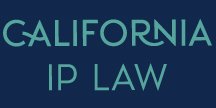Trade dress protection – is it just in the clouds?
Trade dress protection can be a powerful asset for a business trying to protect its market share. But, it is notoriously difficult to enforce. Among other things, trade dress protection requires showing that the design has acquired distinctiveness in the marketplace. In other words, consumers relate the design to the company trying to enforce the trade dress. This is not a low bar to entry.
Take, for example, Apparatus, a design company that obtained a registration on the 3D design of a light fixture called “Cloud Fixture.” Apparatus filed its application with the USPTO in 2014 and spent years going back and forth with the USPTO on whether it could show distinctiveness. First, Apparatus tried to rely on popular articles about the Cloud Fixture and the amount of money Apparatus had spent on marketing. That didn’t work, so Apparatus followed up with more articles, declarations from customers, and written emails from customers expressing their confusion about knock-off fixtures. This still didn’t work. Apparatus filed more third-party declarations. All in, Apparatus filed about a dozen declarations before it convinced the USPTO that Cloud Fixture had acquired distinctiveness.
Only some companies have the resources or customer base for such a fight. Historically, these applications comprise a small percentage, less than 9%, of trademark applications. See Stuart Graham et al., The USPTO Trademark Case Files Dataset: Descriptions, Lessons, and Insights (January 2013), available at https://papers.ssrn.com/sol3/papers.cfm?abstract_id=218862.
Nonetheless, if you ask Apparatus, I bet they would say it was worth the fight. They recently sued Wayfair for selling knock-off light fixtures, and, of course, its claims rely heavily on its hard-fought trade dress registration.
“Disclaimer: Attorney advertisement. This post is not intended to be legal advice and is simply intended to be informative.
